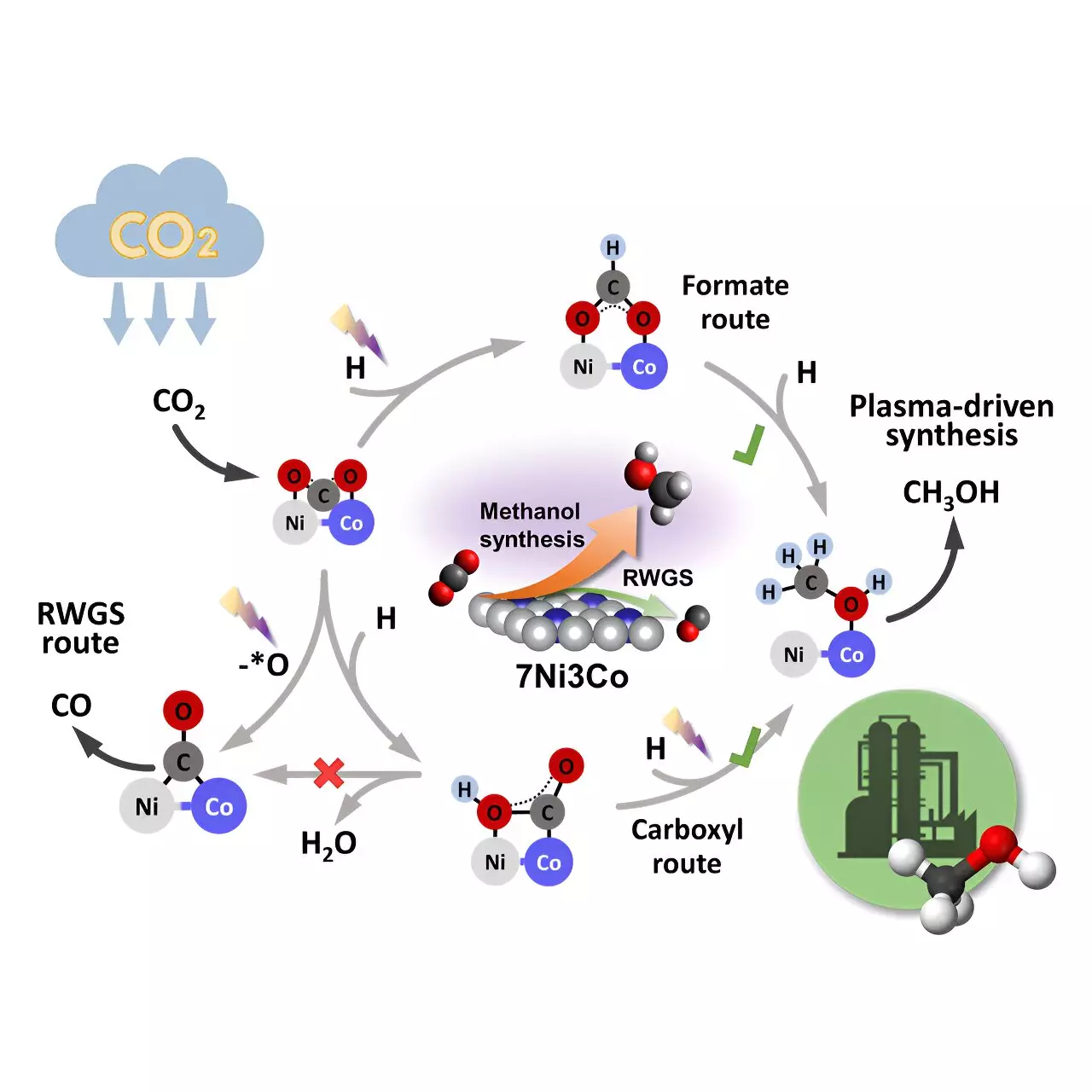Researchers at the University of Liverpool have made significant progress in the field of sustainable fuel production by developing a novel plasma-catalytic process for converting carbon dioxide (CO2) into valuable fuels and chemicals. This breakthrough marks a crucial step towards achieving a sustainable net-zero economy by addressing the limitations of traditional thermal catalysis, such as high temperatures and pressures, which result in low CO2 conversion and methanol yield.
The key to this innovative process lies in the use of non-thermal plasma, an ionized gas containing energetic electrons and reactive species that can activate strong chemical bonds of inert molecules like CO2. This unique approach allows for chemical reactions to take place under mild conditions, with the team achieving an impressive 46% selectivity for methanol and 24% CO2 conversion at just 35°C and 0.1 MPa. Additionally, plasma-based modular systems offer flexibility in utilizing intermittent renewable electricity for decentralized production of fuels and chemicals.
In situ plasma-coupled Fourier transform infrared (FTIR) characterization and density functional theory (DFT) calculations revealed that the bimetallic Ni-Co interface serves as the primary active center for methanol synthesis. By promoting asymmetric adsorption of CO2 molecules at the bimetallic interfaces, the distribution of products can be effectively modulated. This precise control of Ni-Co sites in bimetallic catalysts shows great promise for tailoring reaction pathways and optimizing fuel production.
The use of plasma catalysis as an emerging electrification technology for sustainable CO2 conversion and fuel production presents an attractive alternative for the chemical industry. The ability to perform these reactions at ambient conditions using a modular and scalable plasma system, powered by intermittent renewable electricity, enhances the feasibility of decentralized fuel and chemical production. This cutting-edge research from the University of Liverpool paves the way for future advancements in catalytic CO2 conversion and offers promising avenues for industrial applications in the pursuit of a sustainable future.


Leave a Reply